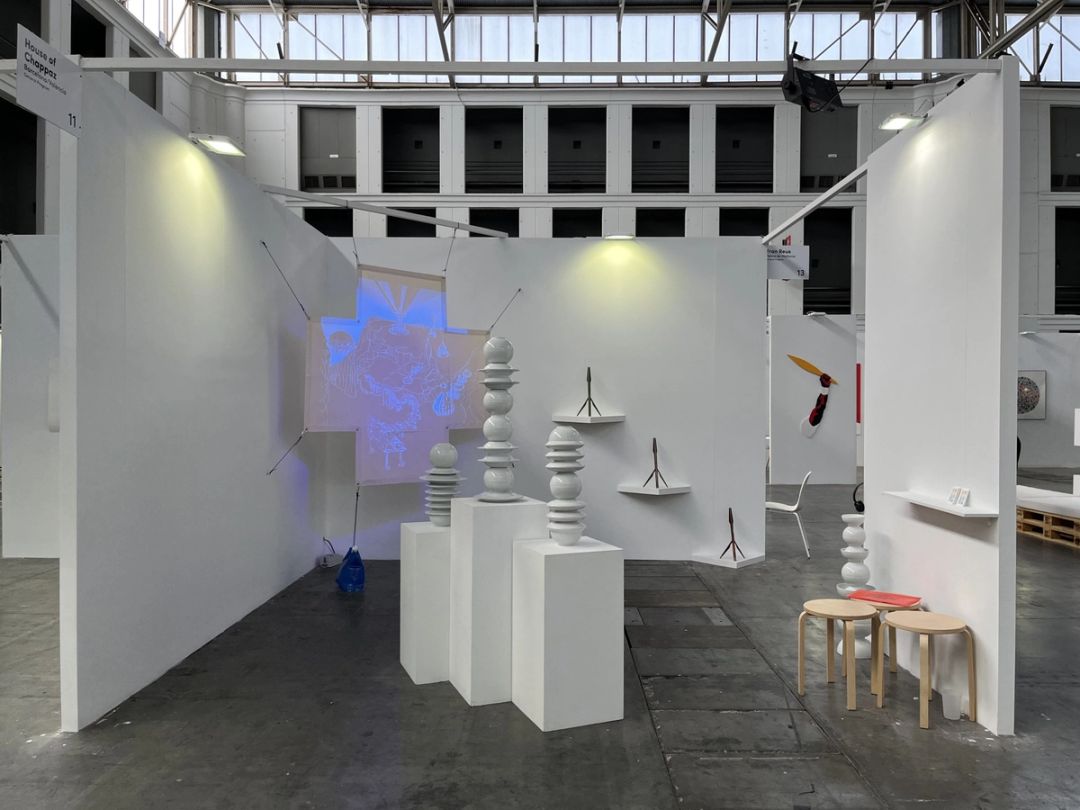Man overboard!

The Burst of Extinction
"Anyone who has begun to glimpse the magnitude of the world order and its laws easily loses their own small self." —Sigmund Freud, Leonardo da Vinci: A Memory of His Childhood, 1910 The subject is doomed to suffer constant paramnesia if they attempt to confront their experience of the world. This sensation has sharpened as the stimuli received daily are amplified. In this way, when everything is possible, there is nothing to hold onto. In 1999, in an atmosphere surrounded by astonishment and phantoms over the turn of the millennium, eXistenZ by David Cronenberg was released, a free-fall exercise through the fabric of reality. Allegra Geller and Ted Pikul immerse themselves in a video game that constantly leads them to question whether their environment is real. The notion, which Baudrillard posits in Simulacra and Simulation (1981), of models of the real that do not originate in reality is repeated throughout the film. This drives the characters to continuously touch the objects around them; this search for sensation and an anchor in the material world leads them to a haptic knowledge that is as tainted as their surrounding visual reality. This wandering through an environment that provides no assurance that their perception and memories are real leads them to a new reality, a final screen where eXistenZ, the name of the game, is actually a creation of tranCendenZ. The subject is doomed to suffer constant paramnesia if they attempt to confront their experience of the world. This sensation has sharpened as the stimuli received daily are amplified. In this way, when everything is possible, there is nothing to hold onto. The subject is doomed to suffer constant paramnesia if they attempt to confront their experience of the world. This sensation has sharpened as the stimuli received daily are amplified. In this way, when everything is possible, there is nothing to hold onto. Text by Eduardo García Nieto Independent curator and educator



Available works

Boira Ovidi Benet
Stainless steel sculpture Unique piece
This work has been exhibited in the following exhibitions: Man in the water!

Escribir en el Mar Ovidi Benet
Rubber, resin and fiberglass Unique piece
This work has been exhibited in the following exhibitions: Man in the water!

Helios Ovidi Benet
Nautical technical fabric, lacquered iron anchors and anodized aluminum rod Unique piece
This work has been exhibited in the following exhibitions: Man in the water!

Los Remantes Ovidi Benet
Stainless steel, candle and limestone sculpture Unique piece
This work has been exhibited in the following exhibitions: Man in the water!

Luna Nueva Ovidi Benet
Dichroic glass and cut vinyl + steel support Unique piece
This work has been exhibited in the following exhibitions: Man in the water!

Marjal Ovidi Benet
Stainless steel, wood with epoxy resin, glass rock, granite and nautical rope Unique piece
This work has been exhibited in the following exhibitions: Man in the water!

Sunset Ovidi Benet
Radiata pine wood, anodized aluminum Unique piece
This work has been exhibited in the following exhibitions: Man in the water!
Related exhibitions

The Day After Tomorrow Ovidi Benet,Joel Blanco,Mit Borrás,Pablo Durango
From April 14 to June 1, 2023

This Fucking Name Christto & Andrew,Andrew Roberts,Aggtelek,Diego del Pozo Barriuso,Fito Conesa,Momu & No Es,Natacha Lesueur,Ovidi Benet,Pablo Durango
From March 11 to June 30, 2022

Man overboard! Ovidi Benet
From September 22 to November 24, 2023

Mixtape Vol. 1 Christto & Andrew,Carlos Sáez,Antonio Fernández Alvira,Antoine et Manuel,Andrew Roberts,Aggtelek,Diego del Pozo Barriuso,Fito Conesa,Michael Roy,Mit Borrás,Momu & No Es,Natacha Lesueur,Ovidi Benet,Vicky Uslé,Octavi Serra,Sarah & Charles,Carmen Ortíz Blanco,Pablo Durango
From September 15 to November 25, 2022







